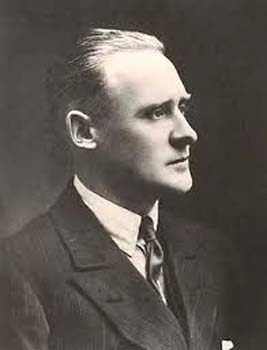Last time, we were looking at “Soldaten” by Sönke Neitzel and Harald Welzer:
The book relates how German prisoners of war were listened to by German speaking operators, usually Jews, who wrote down the horrific tales they told. Here are some Wehrmacht prisoners, crossing one of the Great Lakes on their way to a Prisoner of War camp:

And here is one of those listeners, back in England:

Towards the end of their book, “Soldaten”, Neitzel and Welzer provide a brief summary of what they have discovered:
“A lot of what appears horrible, lawless, and barbaric is part of the normal frame of reference in wartime. Stories about German cruelty don’t attract any more attention in World War II than they do in reports by US soldiers in Vietnam. Instances of cruelty rarely seem spectacular to the majority of soldiers. Such violence is instrumental in nature. It’s hardly any surprise that it occurs in war.”
To be honest, I’m not too sure that I agree with all of that. My perception is these horrific events were much more the norm with the German forces in World War Two than they were with either the British or the Americans in World War II or in other wars.
Having said that, the Germans did not carry out My Lai and the Germans were not present in the Korean War. My Dad’s friends in the RAF, not Germans, were the ones who sank two U-boats after VE-Day and, as a little boy, I remember a friend of mine telling me how his Dad, a soldier in India, Burma and Siam witnessed appalling incidents of violence, cruelty and murder in native villages, and he wasn’t in the Japanese army. He was in the British army.
During World War Two, though, the majority of the incidents of extraordinary cruelty and barbarity took place on the Eastern Front, committed by Germans on Russian victims. One of the tapes mentioned in Post No 1 was of a man whose surname was Graf. He was an ordinary Wehrmacht soldier:
“The Russian POWs had nothing to eat for three or four days, then the guard would hit one over the head and he was dead. The others set on him and cut him up and ate him as he was.”
Here are some Russian prisoners:

All of the various motivations for violence come together when the Final Solution is considered:

As far as the Final Solution is concerned, this type of violence is seen as one possibility in the list of possible social actions between communities. In this case, it was violence by more or less every German against every Jew they could find:

In Allport’s Scale, it is Stage Five of five, namely “the extermination or removal of the out-group”. Other examples include Cambodia, Rwanda and Armenia.
In the Second World War, say the authors, individuals tended to repeat their previous behaviour, especially if they had escaped punishment for it. One of the most frequent actions on the Eastern Front was the massacre of defenceless people as a reprisal for the death of a German soldier:

If people commit acts of violence and nobody is ever punished, we have “inhumanity with impunity”, which describes perfectly German behaviour in captured Poland and the Soviet Union. Killing young children was not a problem:

“Autotelic violence” is violence for its own sake, because the perpetrator finds it exciting and entertaining, whether it is the first killing or the thousandth:

Individual soldiers usually did what the group did. The group was their entire world and their standards of behaviour were considered the ones to follow.

If some of the group wanted to kill Jews and then throw them into a ditch, it soon became acceptable behaviour. So did the mechanised slaughter of the death camps :

One other, final, factor helping to trigger off the violence by the Germans in the Second World War was their desire for revenge after defeat in 1918. In German thinking, their defeat came about not because the Allied armies were victorious, but because the German army was betrayed by the people back home in Germany, such as the Communists, the Socialists and the Jews. (And most of the Communists and the Socialists were Jews anyway.)
The solution was easy. Kill them all. The Communists, the Socialists, the Jews, the Gays, the Gipsies, Black People, everybody who didn’t agree with you. That’s a long road to go down. And it’s marked with a corpse every few yards:























